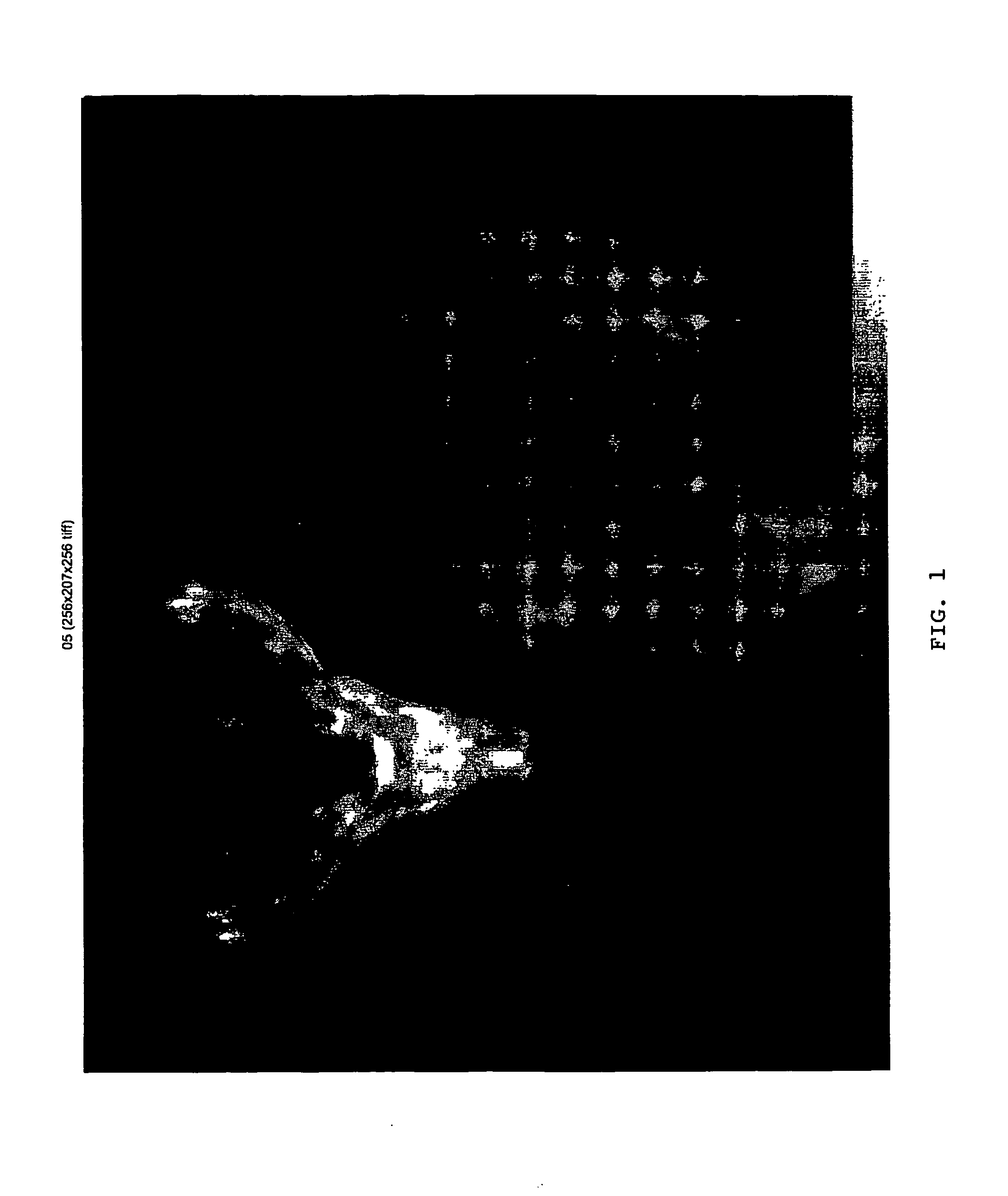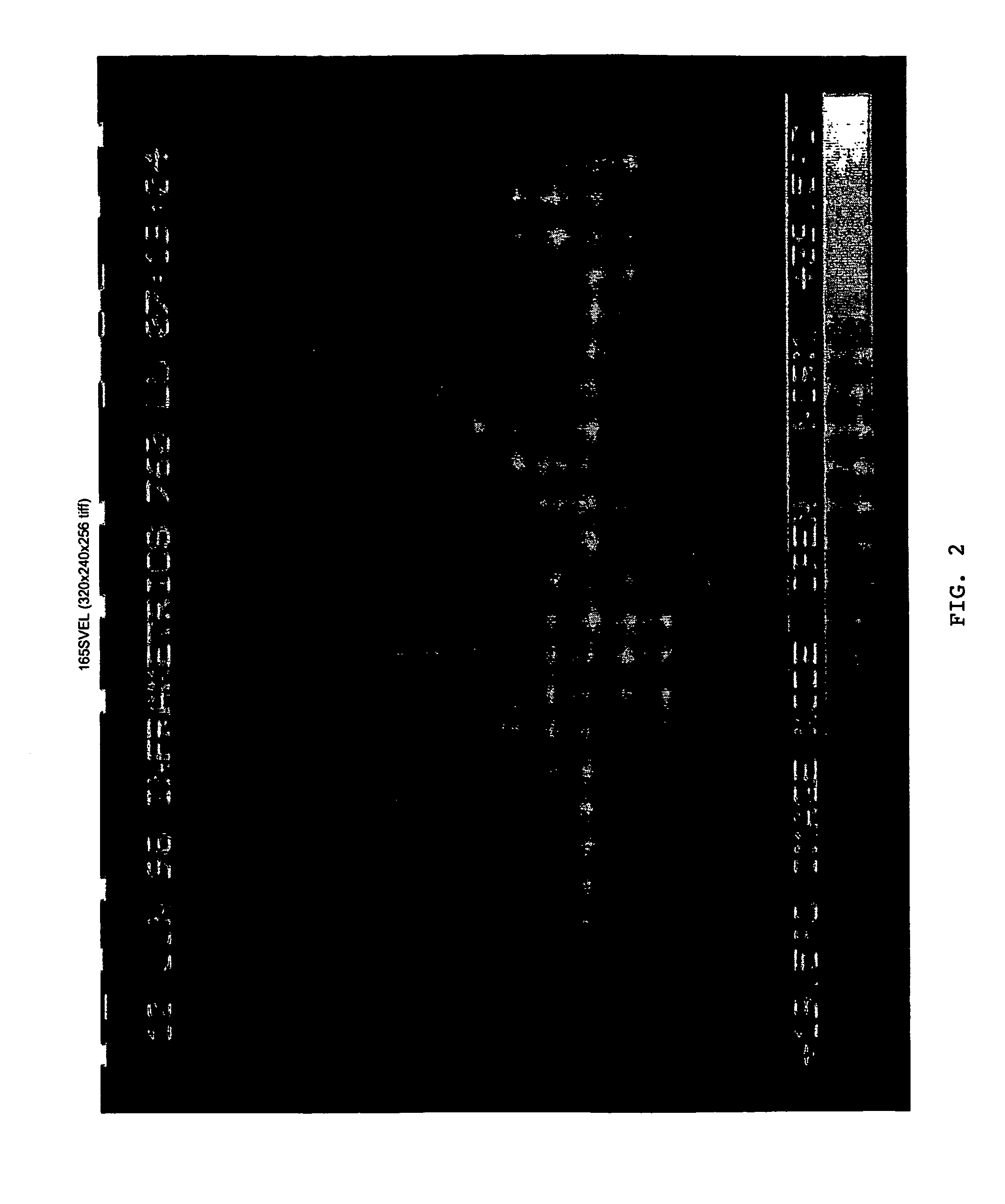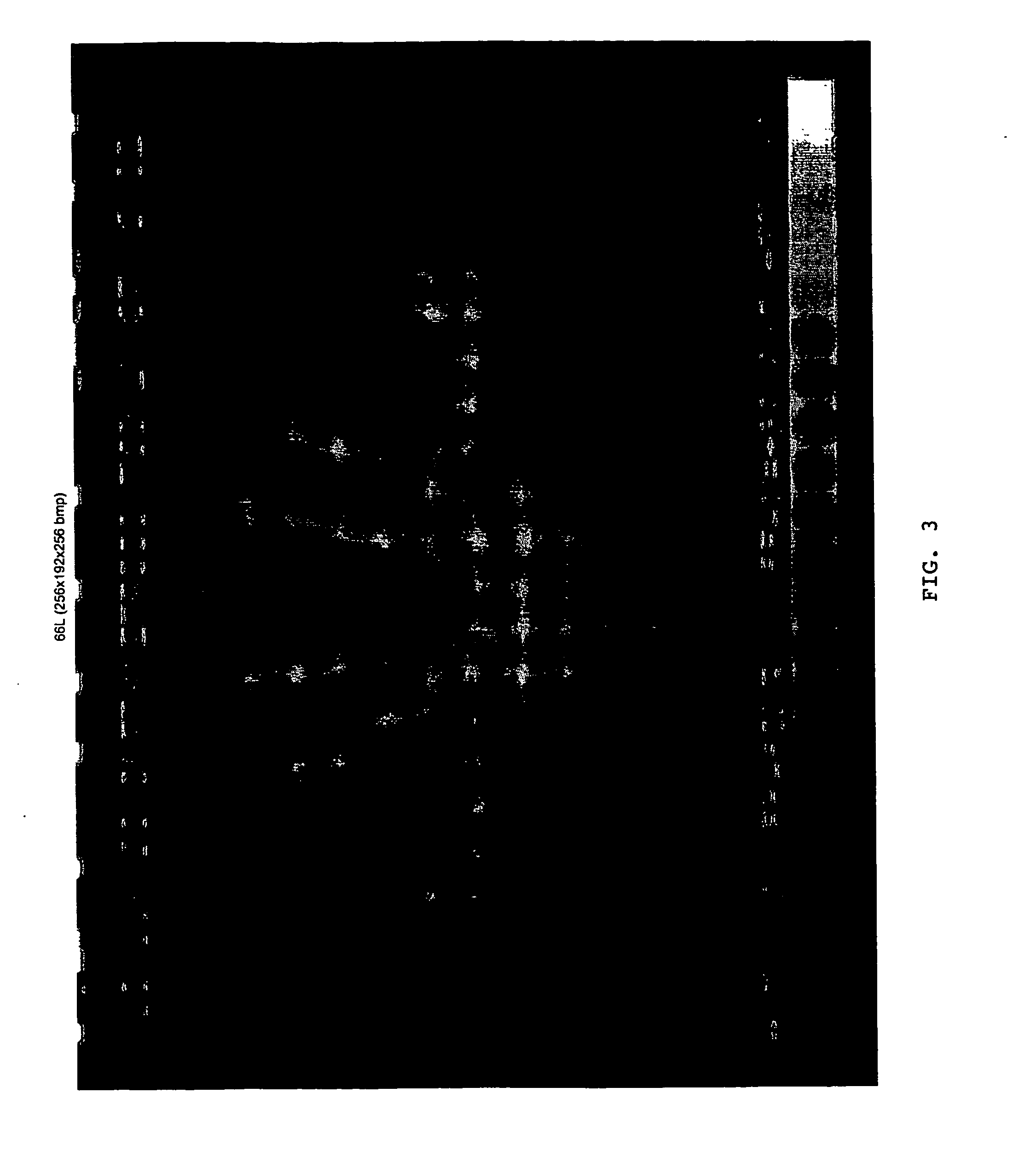Method for the evaluation of velvet antler
a velvet antler and evaluation method technology, applied in the field of velvet antler evaluation, can solve the problems of inability to accurately assess ash content, inability to indirectly measure ash content, and inability to confer human health benefits to the calcified portion of deer velv
- Summary
- Abstract
- Description
- Claims
- Application Information
AI Technical Summary
Benefits of technology
Problems solved by technology
Method used
Image
Examples
example 1
Determination of Maturation Stage of Antler Using Infrared Thermography
[0138] Twenty-six domestic Wapiti stags (Cervis elaphus) were used in this study conducted at the Agriculture and Agri-Food Canada Lacombe Research Centre (Lacombe, Alberta, Canada). Care was taken to maintain the animals in a steady state in the handling area. All animals were in the stage of rapid antler growth, as indicated by the presence of velvet on the left and right antlers. FIG. 1 shows a real time image (gray tone) of a stag displaying velvet antler.
[0139] The left and right antlers of all animals were scanned from a dorsal view at a distance of approximately 3 meter using a 760 Inframetrics broad band camera fitted with a 0.5× lens (Inframetrics Comp. North Bellercia, Mass.). TIP image software (Ottawa, Canada) was used for the subsequent analysis of the thermographic images.
[0140] Table 1 indicates the individual temperatures (° C.) of both left and right antlers of all animals. Specifically, the a...
example 2
[0150] Fourteen domestic wapiti stags (Cervis elaphus) raised at an Alberta Game farm, and used in this study conducted at the Agriculture and Agri-Food Canada Lacombe Research Centre (Lacombe, Alberta, Canada). Care was taken to maintain the animals in a steady state in the handling area. All animals were in the stage of rapid antler growth, as indicated by the presence of velvet on the antlers and the display of higher temperatures at the tip of the antler compared to the temperature at the base of the antler. The antlers were removed from all animals using standard methods known to those skilled in the art (Canadian Food Inspection Agency, 1998).
[0151] The antlers were scanned in vivo and after harvest to record the infrared thermographic images as the antler cooled. The antlers of all animals were scanned using a 760 Inframetrics broad band camera fitted with a 0.5× lens (Inframetrics Comp. North Bellercia, Mass.). TIP image software (Ottawa, Canada) was used for the subsequent...
PUM
| Property | Measurement | Unit |
|---|---|---|
| time | aaaaa | aaaaa |
| time | aaaaa | aaaaa |
| time | aaaaa | aaaaa |
Abstract
Description
Claims
Application Information
 Login to View More
Login to View More - R&D
- Intellectual Property
- Life Sciences
- Materials
- Tech Scout
- Unparalleled Data Quality
- Higher Quality Content
- 60% Fewer Hallucinations
Browse by: Latest US Patents, China's latest patents, Technical Efficacy Thesaurus, Application Domain, Technology Topic, Popular Technical Reports.
© 2025 PatSnap. All rights reserved.Legal|Privacy policy|Modern Slavery Act Transparency Statement|Sitemap|About US| Contact US: help@patsnap.com



